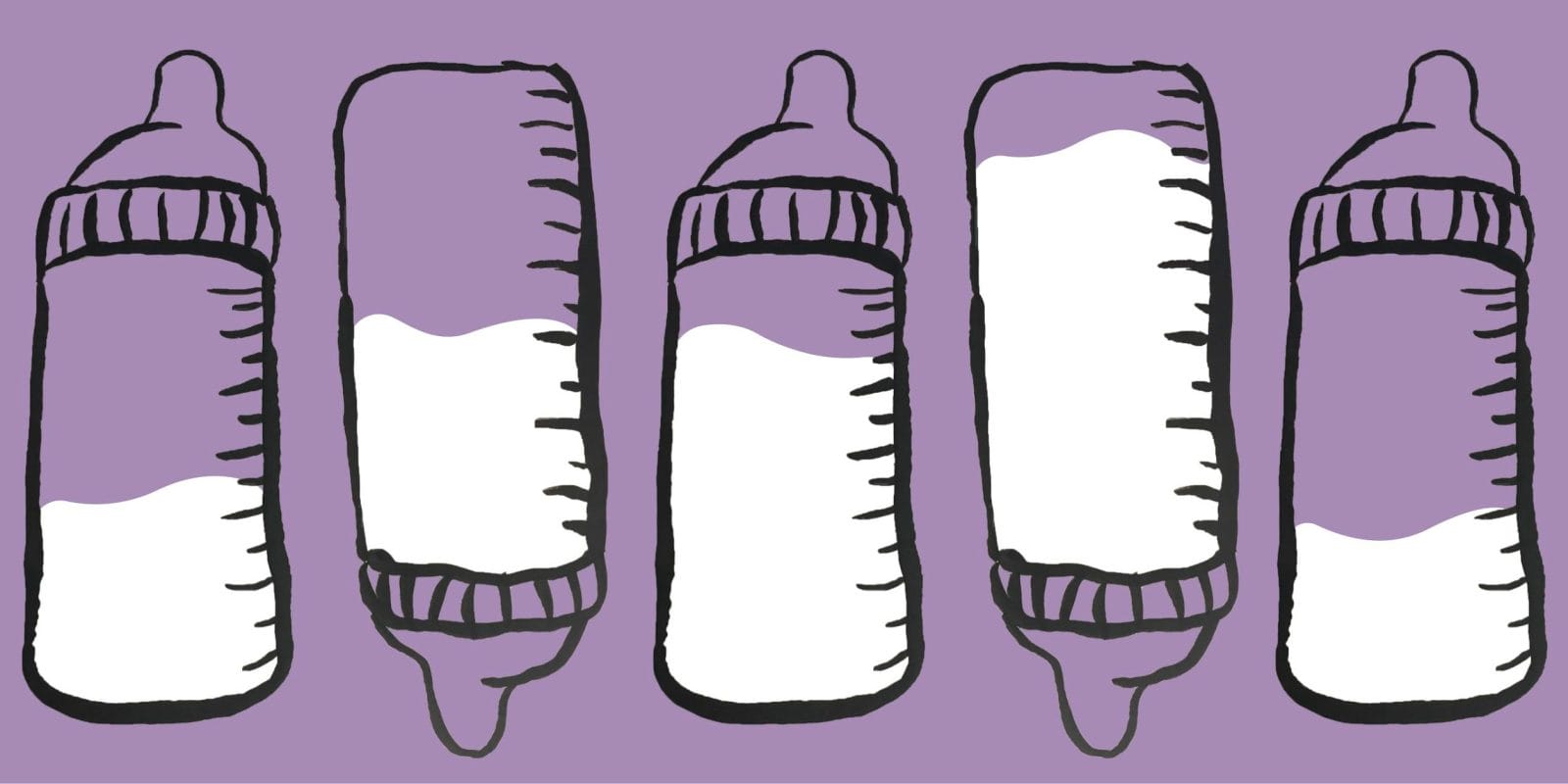What Is Paced Bottle Feeding All About?

Why and how you should pace feed your breastfed baby.
If you’ve ever sat through a breastfeeding class or read a breastfeeding book, you’ve likely heard the warnings against introducing a bottle too soon. The fear is that it will disrupt your breastfeeding relationship by causing your baby to prefer the bottle and refuse to nurse at the breast. But what about once you’ve established a healthy supply and that’s no longer a concern? What about when you must return to work or you simply desire to have someone else take over a feeding?
The transition from breast to bottle isn’t necessarily smooth just because you’ve had a few good months of nursing under your belt. But paced bottle feeding, which mimics aspects of breastfeeding and allows your baby to control milk intake at each feeding session, can make bottle feeding easier while still supporting breastfeeding efforts. Plus, it can help you avoid habits that could end up being harmful to breastfeeding.
Curious to know if paced bottle feeding is for you? Here are five things you should know about it.
1. It lets your baby set the pace. Begin by using a slow flow nipple with a wide base, which resembles the anatomy of the breast. Here are a couple of options we love. Next, sit your baby upright, yet slightly reclined. This prevents milk from merely pouring into baby’s mouth, like it would if your baby were completely laid back.
2. It reinforces latching techniques. Touch the nipple of the bottle to your baby’s top lip and sweep down over their bottom lip. This is meant to stimulate their rooting reflex. Allow your baby to accept or pull the nipple into their mouth. Keep from pushing or forcing the nipple in. Insure that your baby has a wide, deep latch onto the nipple, similar to when feeding at the breast.
3. It prevents overfeeding. Try to slow the feeding down and encourage your baby to suck and swallow intermittently by adjusting the level of the bottle throughout the feeding. Raise it to a more horizontal position once your baby draws the nipple into their mouth and begins to suck, then lower it after 2-3 sucks to allow baby a chance to swallow and breathe. This slower pace allows your baby the chance to determine when they are satiated, as opposed to a quick feeding, with a fast flow nipple, where your baby is completely supine, and there are no breaks.
4. It doesn’t waste as much milk. Ask your childcare provider to fill the bottle in smaller 1-3 oz. increments. They can refill the bottle if your baby shows signs of wanting more. Once baby shows frustration, lack of interest, or turns away, stop the feeding. Don’t force your baby to take more. Make sure to communicate with your caregiver so that everyone follows this feeding method.
Though paced bottle feeding is a wonderful option once you’ve gotten your baby to take a bottle, it’s important to remember that for many breastfed babies, taking a bottle initially takes practice and time. The best way to help your baby get more comfortable with taking a bottle is by offering it on a regular basis.
Begin offering it once a day about 2-3 weeks before you plan to return to work, and increase the frequency as you get closer to the date. Give yourself and your baby lots of time to make the transition and try not to panic if the first few attempts don’t go smoothly.
Anjelica Malone is a former Third Culture kid turned Global Mama. She is the author of Milk Boss 101: The Modern Breastfeeding Journal and Guide. She is a Lactation Educator Counselor, a birth and postpartum doula, and a Childbirth Educator serving women in the Seattle area, where she lives with her husband, two Little Women, and their mini-dachshund, Aoki. Visit www.AnjelicaMalone.com to book her services or read her writings, which focus on encouraging women to embrace their passions and equipping them to navigate motherhood in the way that’s most natural to them.
Illustration by Amanda Crowley.


































